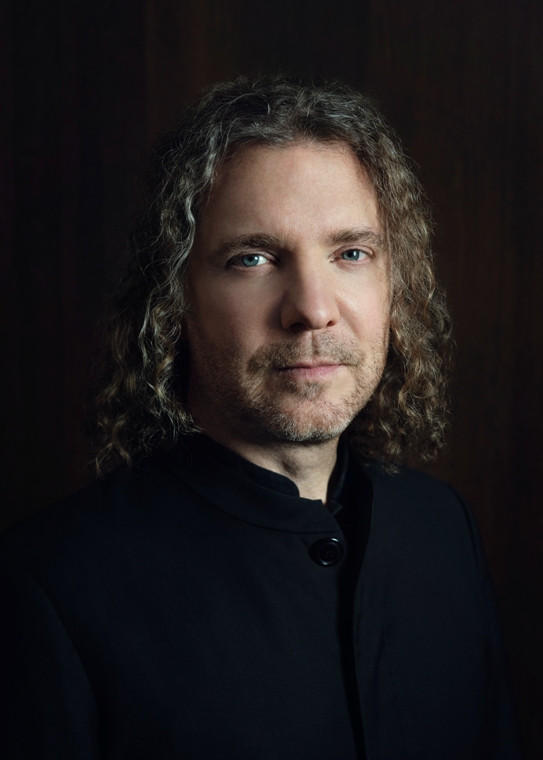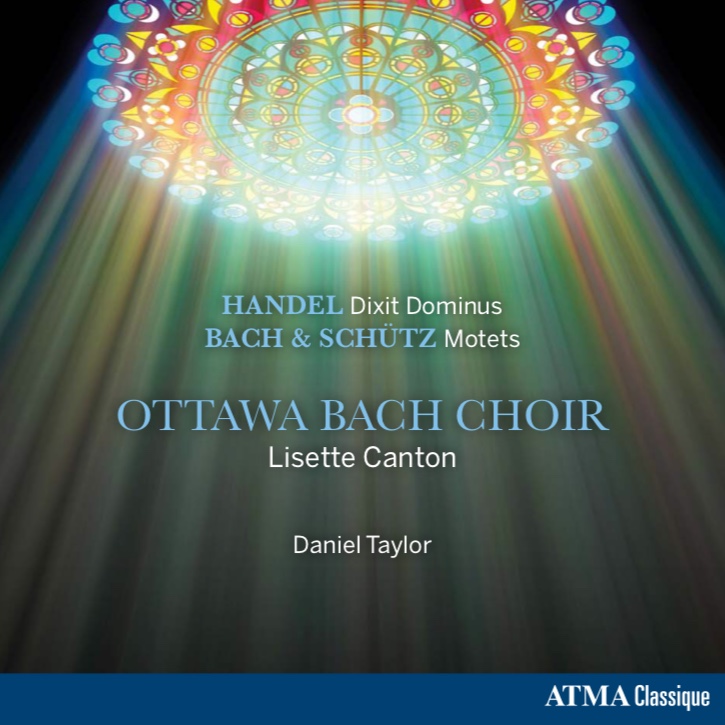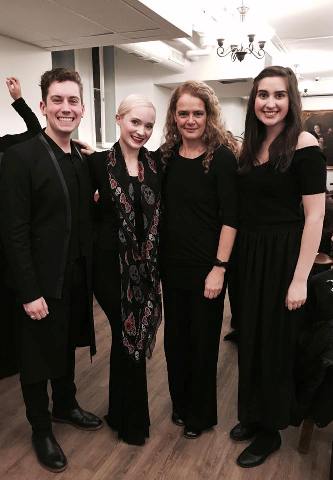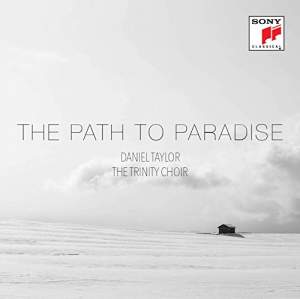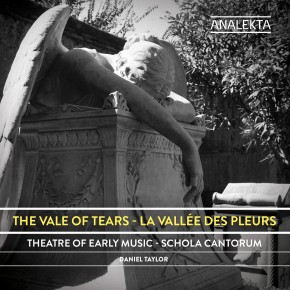| Français | |||||||||||||
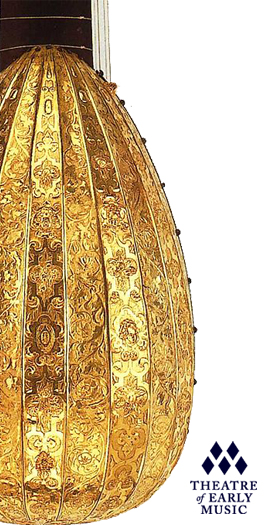 |
|||||||||||||
| TEM About Us |
Daniel Taylor | Tour Dates | News | Discography | Contact Support Us |
||||||||
| Sony Classical | Media/Awards Photographs |
Touring Programs | TEM Musicians | Guest Artists | TEM Choir | ||||||||
Mission StatementThe mission of the Theatre of Early Music is to become a fixture in the rediscovery of early music.
By using only period instruments, original scores, judicious performance practises and appropriate vocal styling,
the TEM seeks to preserve the musical integrity of ancient masterpieces. The distinctive style of the group paired
with the expertise and enthusiasm of the artistic director and conductor, Daniel Taylor, creates captivating
interpretations of magnificent yet neglected works. Welcome to the world of the Theatre of Early MusicThe Theatre of Early Music (TEM) records exclusively for Sony Classical Masterworks. The Theatre of Early Music is an ensemble of some of the world’s finest musicians, sharing a particular passion for early music. Its formation is the result of a search by instrumentalists and singers for opportunities that would allow devotion and dedication to enter into the creative process.
The core of the TEM consists of an ensemble based in Canada that is primarily made up of young musicians. Their distinctive
style, coupled with its artistic director Daniel Taylor’s expertise and enthusiasm, leads to captivating readings
of magnificent but often neglected works. Guest artists performing with the TEM include Dame Emma Kirkby, Nancy Argenta, Karina Gauvin, Suzie Leblanc, Carolyn Sampson, Deborah York, Robin Blaze, James Bowman, Benjamin Butterfield, Charles Daniels, James Gilchrist, Michiel Schrey, Alexander Dobson, Michael George, Peter Harvey, Daniel Lichti and Stephen Varcoe. The TEM’s first recording with BIS Records, Leçons de Ténèbres by Couperin, featured Taylor and Blaze and was released in 2005. The disc was received with critic acclaim: "Beauty of this recording bows to no other." This disc was followed in February 2006 by another BIS Records album featuring an original program of works from the Renaissance entitled Love Bade Me Welcome. The program presented the actor Ralph Fiennes reciting poetry as well as duets with counter-tenors James Bowman and Daniel Taylor. Critics unanimously praised "the legendary counter-tenor James Bowman in the magical duets with remarkable young star Daniel Taylor." In 2009, the TEM released Vivaldi’s Stabat Mater with BIS records, which also featured Bach's setting of Pergolesi’s Stabat Mater featuring Dame Emma Kirkby. The Choir and Orchestra of the Theatre of Early Music has released a dozen CDs so far, and now records exclusively for Sony Classical Masterworks. The best-selling debut disc on the Sony label entitled The Voice of Bach was praised in Gramophone Magazine as “serious music-making of the highest order”. The disc received five stars from both BBC Music Magazine and Classic Music CD, was featured on BBC’s “Desert Island Discs” and received acclaim worldwide including reviews from the Times (London), the Globe and Mail (Toronto), the New York Times, the Guardian (London) and La Scena Musicale (Montreal). The TEM’s latest Sony disc, Come Again Sweet Love, was also very well received. The TEM became a registered non-profit organization in 2002 and a charitable organization in August 2004.
Quebec's Le Soleil described the Choir of the TEM conducted by Daniel Taylor in concert:
Daniel John Taylor, O.C. has been awarded
| |||||||||||||
|
|
The latest Sony choral disc entitled
|
Early Reviews of Path to Paradise CD :
"haunting homophony will leave you breathless"
CBC Radio - Listed The Path to Paradise in their Top 10 Classical Albums for 2017
"The Trinity Choir, Daniel Taylor and Sony Classical are on a roll with their third album in as many years.
Their latest, The Path to Paradise, is hot off the presses, its official release is on Dec. 1, but we've already got our advance copy on repeat.
The repertoire spans 1,000 years, from Gregorian chant (the antiphon "In Paradisum") to Arvo Pärt's 2001 "Nunc dimitis," by way of works
by Renaissance composers Thomas Tallis, John Sheppard, Orlando di Lasso, William Byrd and Nicolas Gombert - mostly motets for Holy Week,
chosen for their enlightening commentary on the theme of salvation.
Comprising singers from Canada and the U.K., the Trinity Choir's laser-beam intonation and blend are as impressive as ever.
The album's centrepiece is Gregorio Allegri's Miserere, performed here with the perfect balance of precision and soul.
The standout track is Pärt's Magnificat, whose haunting homophony will leave you breathless."
December 10th 2017, CBC Radio 2 In Concert:
Paolo Pietropaolo featured The Path to Paradise as his CD of the week!
Feb 11th 2018 CBC Radio 2 Choral Concert:
Kathryn Duncan also featured The Path to Paradise CD
New Review Of Daniel Taylor And The Trinity Choir In Our Sony Recording "The Path To Paradise"
"It is hard to summarize in few words the new discographic opus by the superb Canadian counter-tenor Daniel Taylor
at the head of Trinity Choir, The Path to Paradise: the path in question leads us from anonymous medieval plainsong
to the start of the Baroque era with Allegri (and his famous Miserere), by way of Tallis, Sheppard, Lassus, and
finally a several-century hiatus takes us up to Arvo Pärt.
The most striking aspect of the album, other than the great unity of musical vision regardless of the period of the works,
remains the extraordinary vocal quality which Daniel Taylor demands - and achieves. Taylor didn't just begin his career as a
counter-tenor any old where: he performed at Glyndebourne, at the Met, in Munich, in Amsterdam, and indeed all across the world
of big stages - before he turned towards choir and orchestra, and even production.
This is a magnificent album which is not to be missed."
http://www.qobuz.com/gb-en/album/the-path-to-paradise-daniel-taylor/0886446798981
"World-renowned counter tenor and vocal music director Daniel Taylor delivers his latest album and
another stunningly beautiful disc of incredible vocal music, The Path to Paradise. In The Path to Paradise
Daniel Taylor and The Trinity Choir record an inspiring journey through more than 1000 years of an a capella
landscape, tracing the soul’s lifelong pilgrimage towards a shifting dream of salvation.
During these uncertain times Daniel Taylor proposes, with these moving and enlightening accounts,
a different vision of paradise."
https://avxhome.unblocked.vc/music/DanielTaylorThePathtoParadise2017.html
AllMusic Review by James Manheim :
"Specialist recordings of Renaissance music tend to focus on a single style, composer, or period.
Recordings aimed at general listeners tend to do the same, perhaps inviting listeners to draw analogies
with visual art or with history. Conductor Daniel Taylor and his Trinity Choir do something entirely different.
There’s a seductive surface to the choir’s sound, accounting in part for its popularity, but that’s not all there
is to it: you don’t need obscure Renaissance works by the likes of John Sheppard and Nicolas Gombert to get by on a
smooth surface. Instead, Taylor is trying to get you to hear Renaissance music with something like the ears of the
people who first sang it and listened to it. Is it full-textured or simple? Polyphonic or chordal? Imitative in
texture or free? Taylor’s program moves from one type to another. You can listen to more from any of these composers
in other performances, but what Taylor does is get you to hear the differences, and to set them off beautifully.
To this end, he also introduces contemporary, unaccompanied polyphony by Arvo Pärt (the much-recorded, but rarely
so reverently recorded, Magnificat and Nunc dimittis), which brings the texture down to its simplest at the middle
of the program and then has it expand again. Sony’s sound from St. Albans the Martyr church in London reveals lovely
shades in the choir’s sound. Highly recommended, and a great place to start with Renaissance music for anyone."
https://www.allmusic.com/album/the-path-to-paradise-mw0003122178
The Independent UK Review of Path to Paradise CD :
"The influential impact of John Eliot Gardiner’s work, particularly with the monumental series of Bach Cantatas, on choral recordings
continues to ripple outwards. Here, Daniel Taylor and The Trinity Choir offer a small but impressive survey of religious a cappella
music which seeks to dissolve the boundaries between old and new, home and abroad, by including Renaissance masterpieces by Byrd,
Tallis and Allegri alongside modern settings of traditional texts by Arvo Part. Taylor suggests he’s trying to restore, to
the cold stone surroundings of today’s churches, something of the former light and colour which once dazzled congregations,
and he does just that with Byrd and Tallis’s separate settings of the "Miserere" and John Sheppard’s less
well-known "Libera Nos". There’s a seamless passage between Renaissance polyphony, plainsong and Pärt’s shifting tintinabulli,
climaxing in an enchanting arrangement of Allegri’s "Miserere Mei, Deus" of unusual calm and charm,
particularly in the recurrent descending high ornaments, so often strident but here bathed in balm."
"This music reaches to us across the centuries, speaking beyond speech of the sublime authority of love
which pushes against the fragility of our existence.
The word sublime should never be used lightly, but if ever a collection of music warrants the term it's this one.
In keeping with its title, this latest recording by Daniel Taylor and the Trinity Choir, their follow-up to Four
Thousand Winter and the Juno-nominated The Tree of Life, offers a direct route to paradise, its figurative access
achieved when the immediate space is filled with its glorious vocal performances.Though their works are set to
sacred texts about the soul's lifelong struggle to achieve salvation, The Path To Paradise presents spiritually
replenishing music whose rapturous beauty is capable of speaking to the faithful and non-faithful alike.
Some recordings reflect back to us the ugliness and corruption of the world; this one presents a glorious realm
of transcendent beauty that makes the one around us seem woefully wanting by comparison."
http://www.textura.org/archives/t/taylor_pathtoparadise.htm
Analekta: The Vale of Tears / La Vallée des Pleurs
Latest release for The Theatre of Early Music with Schola Cantorum
|
|
The Vale of Tears/ La Vallée des Pleurs1. Praetorius: "Hört auf mit Weinen und Klagen"Schütz: Musikalische Exequien, Op. 7 2. Concerto in the form of a German Requiem Mass 3. Motet: "Herr, wenn ich nur dich habe" 4. Canticle of B. Simeonis: "Herr, nun lässest Du Deinen Diener" 5. Praetorius: "Mit Fried und Freud ich fahr dahin" J.S. Bach: O heilige Geist- und Wasserbad, Cantata BWV 165 6. Aria (soprano): "O heilige Geist- und Wasserbad" 7. Recit. (bass): "Die sündige Geburt verdammter Adamserben" 8. Aria (alto): "Jesu, der aus großer Liebe" 9. Recit. (bass): "Ich habe ja, mein Seelenbräutigam" 10. Aria (tenor): "Jesu, meines Todes Tod" 11. Chorale: "Sein Wort, sein Tauf, sein Nachtmahl" Schola Cantorum and The Theatre of Early Music: Daniel Taylor, Director |
La Scena Musicale, Montreal, November 2015
"It’s clear that Daniel Taylor adores the human voice. He has meticulously chosen the singers he works
with and shepherds these talents with sensitivity and a deep understanding of the music.
This vale of tears turns into a river that flows forth, nearly a century later, into Bach’s Cantata BWV 165.
This baptismal cantata ends in a chorale of limpidity and purity.
This must be the finest performance of this stand-alone work by the great composer. Soul-uplifting and essential."
Theatre of Early Music, Schola Cantorum, Dan Taylor, The Vale of Tears
Article posted on CBC web site by Robert Rowat - Sept 2015
On the heels of their Juno-nominated 2014 album The Heart's Refuge, the Theatre of Early Music, Schola Cantorum and
director Daniel Taylor are back with another exciting release on the Analekta label, The Vale of Tears.
The Theatre of Early Music is Taylor’s collective of early music specialists committed to reconstructing music for historical events,
and that’s exactly what we have in The Vale of Tears. Here, the event in question is a funeral for Heinrich Posthumous Reuß,
a member of the noble class in Dresden where another Heinrich, Schütz, was Kapellmeister.
Schütz composed his Musikalische Exequien in 1635 to honour Reuß, and it is has endured as his most famous work.
It’s complemented on The Vale of Tears by J.S. Bach’s cantata O heilige Geist- und Wasserbad, which draws on some of the same texts and
chorale sources as Schütz’s work and two hymns by Michael Praetorius that were performed at Reuß’s burial service.
It’s a substantial choral program for Schola Cantorum, a vocal ensemble comprised of students from the Univeristy of Toronto’s faculty of music, where Taylor is head of historical performance.
But in the few years since he established the group, it has blossomed into a virtuosic choir capable of tackling the most challenging baroque repertoire.
We reached Taylor by email to find about more about his most recent project.
Music from the early baroque period doesn’t get as much attention as music from the high baroque. Why is that?
It could be said that, aside from Monteverdi, many of the composers from the early baroque period have been neglected. Perhaps until recently, ensembles have not taken risks in their programming, so often it’s Fireworks or the Brandenburgs, in part because of the reduced funding provided by the federal government to the arts.
The Theatre of Early Music made its first effort to remedy that with our Juno-nominated album dedicated to early German composers including Kuhnau and J.C. Bach. Kuhnau was a composer I first brought to the Quebec and Canadian public thanks to Christopher Jackson’s invitation to direct the Choir of the Studio de musique ancienne de Montréal.
In many ways, Christopher proved to be a mentor and inspiration to me and my work that would follow. It’s encouraging to see groups such as Arion now programming Kuhnau, it is a compliment to my musicians and to their dedication as well as to Christopher’s unerring commitment to early music.
This album gives us a faithful representation of the kind of music we’d hear at a solemn occasion in 17th-century Germany. Does this sort of historic immersion drive your projects with the Theatre of Early Music?
Absolutely. My interest in liturgical reconstructions is driven by my belief that the art itself is already perfect in form; this, to be clear, this is not about having a
"brand name" or leaving my own fingerprints all over the scores, but in allowing the original beauty of the work to be shown.
It must be like the feeling of revelation that they had when they restored the frescoes of the Sistine Chapel, this is very much a sacred process guided by the musicians.
You’ve been directing U of T’s Schola Cantorum for three years now. What are the challenges you face making music at a professional level with a student ensemble?
There is a moment that I usually wait for in each rehearsal, that moment during which I see the students singing with joy (priority number 1!) suddenly realize that I am going to make very specific professional artistic demands of them, they are, after all (as one of the reviewers noted recently) an ensemble of the elite singers in this country, and with opportunity comes tremendous discipline and very, very hard work.
Their first concert was with the greatest choir in the world, the Tallis Scholars, and since then they have appeared with members of the Monteverdi Choir, the Gabrieli Consort and the Kammerchor Stuttgart. Combined with the rich array of courses offered through the University of Toronto’s choral program developed by Dr. Hilary Apfelstadt, our program is unrivaled in Canada.
Tell us what the recording sessions were like.
Recording sessions were intense and yet the singers and I found them to be greatly rewarding. For some of these young people,
this was their first professional recording yet instead of hearing doubt or hesitation, you can hear their excitement.
To be sure, the Musikalische Exequien is a complex piece and there were certainly times when I asked myself why I had set such a monumental
task before all of us. However, they answered this challenge by lifting the music to a higher level.
The New York Times : Embracing Handel’s Leaping Arias and Duets
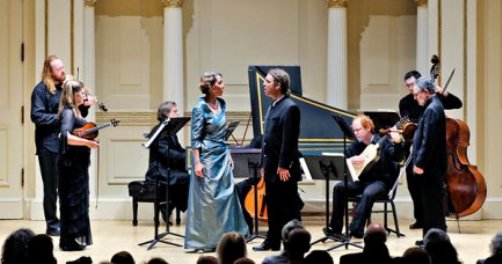 Weill Recital Hall
Weill Recital Hall
Carnegie Hall
New York
November 15, 2011
Theatre of Early Music players:
Cynthia Roberts, violin
Edwin Huizinga, violin
David Miller, viola
Amanda Keesmaat, cello
Reuven Rothman, bass
Eric Milnes, harpsichord
David Jacques, baroque guitar
The Theater of Early Music, a Canadian period-instrument and vocal ensemble led by Daniel Taylor, the countertenor, expands and contracts
to suit the project at hand. Mr. Taylor brought a compact version to Weill Recital Hall for a Handel program on Tuesday,
and though he was listed in the program book as both countertenor and conductor, there was no conducting to be done.
When the instrumentalists had the spotlight -in trim, zesty accounts of a passacaglia (from HWV 432) and the
"Giulio Cesare" Overture - Mr. Taylor left them to it.
The evening was mostly devoted to arias and duets from Rinaldo, Tolomeo, Giulio Cesare and Rodelinda, in which
Mr. Taylor split the spotlight with the soprano Deborah York. They were well matched. In the ebullient Scherzano sul
tuo volto (I look in your beloved eyes) from Rinaldo, Ms. York’s bright, tightly focused timbre perfectly complemented
Mr. Taylor’s velvety tone, and when Ms. York darkened her sound in the mournful duet Io t’abbraccio (I embrace you)
from Rodelinda, the blend was just about perfect.
On her own, Ms. York was at her best in Bel piacere (It is a great pleasure) and Lascia ch’io pianga (Let me weep),
both also from Rinaldo. In Bel piacere, Handel demands an athletic series of barely prepared leaps, which Ms.
York handled so gracefully that she made her ornamentation of the top notes sound natural and comfortable if not
necessarily easy. In Lascia ch’io pianga, one of several tragic arias that gave the program its emotional richness,
she sang with a wrenching dynamic suppleness.
Mr. Taylor matched that quality in several pieces, most notably the lustrous Dove sei (Where are you)
from Rodelinda, where his tone was at its most fully burnished........
By Allan Kozinn, Published in NY Times on November 16, 2011
Photo credit: Karsten Moran for The New York Times
Everything about Tuesday evening’s concert by The Theatre of Early Music at Carnegie Hall was intimate..
....the performance in Weill Recital Hall gave modern audiences a glimpse into how Handel’s audiences would have consumed this music in coffee houses,
concert halls, and in the home. The one-on-a-part ensemble may have left some in the audience yearning to hear a larger group of players to realize Handel’s sumptuous string parts.
However, the balance between the players and singers was perfectly suited to the size of the sold-out Weill Recital Hall, and created a robust
continuo - which contained more than half of the players!
Arias from three of Handel’s most popular operas in modern revival, Giulio Cesare, Rinaldo, and Rodelinda were featured in
the program. But the true gem of the evening was the aria Se il cor ti perde from Tolomeo sung by Daniel Taylor (countertenor).
The opera itself was little known even amongst the most experienced Handelians in the audience. For this piece, Taylor gave a
charming introduction and explained some of his artistic choices. This helped add to the intimacy of the evening....
In the aria, he mixed his falsetto and baritone wonderfully for dramatic effect, and literally let his hair down in order to match
the affekt of the crazed aria. His cadenzas were bombastic, chilling, and downright ferocious. One could really hear and see the rage
of the character Tolomeo, who in the aria threatens his sister Cleopatra.
...Taylor and his colleague Deborah York gave fresh interpretations to these old favorites. Taylor’s delivery of Cara sposa from Rinaldo was
particularly wonderful, and his entrance on the B natural held for more than four full beats was exquisite. A similar effect is written
into the aria Dove sei from Rodelinda, and Taylor let his audience relish in his gentle messa di voce, beginning softly
and then slowly swelling both in volume and vibrato. In all of his arias, Taylor showed remarkable restraint in his use of vocal embellishments and cadenzas.
The result made his choices to alter the music in da capo repeats highly noticeable and effective.
Deborah York’s most stunning aria, perhaps, was Cleopatra’s Tu la mia stella sei from Giulio Cesare. Her da capo ornaments,
more so than in her other arias, were subtly chosen and highlighted her vocal agility. The gorgeous and expansive Se pietá,
another aria for Cleopatra in Giulio Cesare received thunderous applause from the audience.
True to the ensemble’s name, Theatre of Early Music, all of the music was presented in a theatrical manner,....Taylor, for example, never
stood in the center of the stage during introductory ritornelli. For all of his arias, he made a dramatic entrance from stage left.
Often, he even began singing facing away from the audience, singing to the players......
The style of dramatic presentation also contributed to its authenticity.
Submitted by Stephen Raskauskas on 17th November 2011
http://www.bachtrack.com/review-handel-theatre-early-music-daniel-taylor-deborah-york
Daniel Taylor and Deborah York Perform Handel to Perfection
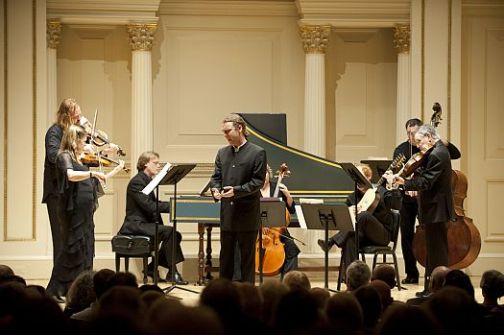 .....all the listener heard was glorious singing, supported by a committed group of instrumentalists. Cynthia Roberts was superb in the role of first violinist,
playing with flare and with an awesome technique. The other instrumentalists were also right on with every note,
including David Jacques who played the Baroque guitar.
.....all the listener heard was glorious singing, supported by a committed group of instrumentalists. Cynthia Roberts was superb in the role of first violinist,
playing with flare and with an awesome technique. The other instrumentalists were also right on with every note,
including David Jacques who played the Baroque guitar.
Cara Sposa, the best known piece on this program, was touchingly sung by Mr. Taylor.
He has an angelic demeanour which well suits songs of lamentation, and he performed this one effortlessly. Se il cor ti perde, a duet from
Handel’s Tolemeo, is very similar in style to Schezano sul tuo volo. both duets weave the voices in, out and around each other:
the harmonizing is ethereal and almost other-worldly.
The second half of the program opened with the overture to Giulio Cesare, Ms. Roberts and her group put so much spirit into their performance that it
seemed as if a full orchestra was on stage. Tu la mia stella sei followed, a difficult aria that York tossed off with ease, reaching up
to the highest vocal register without undue strain or thinning out.
The group returned to Rodelinda and a more familiar aria performed by Daniel Taylor, Dove sei, a lament made poignantly touching by
Taylor’s attention to each word and meaningful but not overly-emotional gestures. This led into a wonderful and difficult aria,
Se pieta di me non senti from Giulio Cesare. Built on a chromatically descending triplet played repeatedly through the entire piece,
with Ms. York’s impassioned voice doubled or echoed by the strings, this was certainly the most moving aria in the concert, and the
considerable applause that followed was appropriately long.
Taylor then took the stage and graciously thanked the New York audience for giving him the opportunity to play in Carnegie Hall.
It was thrilling to him, but even more so to his mother, who was in the audience. He stated that his natural voice was that of a baritone and
that he was able to use this range in this next aria, Domero la tua fierezza. Loosening his ponytail as he took on the role of the mad Tolomeo,
he tackled this wild aria with all its jumping notes and wide intervals. If there was any question whether this angelic countertenor could belt out
dramatic arias, it was answered here. His exaggerated gestures and emphatic holding of the low notes was tremendous fun after so many rueful songs.
Taylor dedicated the final duet from Rodelinda, Io t’abbraccio, to a deceased friend. Appreciative applause continued until the ensemble
returned to do an encore of their first duet Scherzano sul tuo volto.
Stan Metzger
http://www.seenandheard-international.com/2011/11/18/daniel-taylor-and-deborah-york-perform-handel-to-perfection/
Credit for photo : Nan Melville (C) 2011
And from Milwaukee:
Group’s Reading of Handel is all Pro
Taylor and York form a wonderfully complementary duo ..
York sings with a focused, pure sound, making sparing but effective use of vibrato and executing perfectly timed ornaments
with absolute grace. She brings great musical depth and a tremendous range of colors and dynamics to her musical interpretations,
creating a subtle sense of drama in the process. Her soulful, pristine deliveries of arias such as Lascia ch'io pianga from Rinaldo
on Saturday’s program were exquisite.
Taylor has a bigger, more dramatic sound than York, which is remarkably warm and relaxed for a countertenor.
He uses vibrato liberally and is not afraid to color outside the lines of a perfectly refined sound from time to time for musical effect....
Those differing sounds and styles combine to create musical magic in duets. The two singers work together with a
remarkable musical intimacy based on a combination of great musical instincts and the ability to listen and respond to each other.
They give their duets the feel of extremely personal conversations.
By Elaine Schmidt, Special to the Journal Sentinel, Nov. 20, 2011
Early Music Now: Handel, master of opera
Countertenor Daniel Taylor, who sang from Handel operas Saturday on an Early Music Now program, is the best (countertenors)
I’ve ever heard. His voice is big, beautiful, rich and agile. He guides it with unerring feel for the sentiments of the words and
the direction of the phrase. He ornaments brilliantly and with a historian’s sense of style. ...
They sang and played selections from Rinaldo, Giulio Cesare and Rodelinda, ...The singers and players understood
and fully realized them....
This music is also extravagantly virtuosic for the singers. Both York and Taylor negotiated fleet scales and arpeggios with
ease and applied the most astonishing ornaments when Handel instructs them to repeat a section.....
Taylor took ornamentation a step further in Domero, from Giulio Cesare. He dropped out of countertenor guise
and into his natural baritone for certain words, to startling effect. A couple of critics have taken him to task for the
inauthenticity of such a stunt. They have a point, as this would not have occurred in Handel’s time - castrati don’t develop baritone ranges.
But this music is first about amazing voices doing amazing things. In spirit, Taylor adhered to Rule No. 1 of late Baroque opera performance
practice: If you’ve got it, baby, flaunt it! ....
... A near-capacity crowd applauded the Theatre of Early Music with gusto....
Tom Strini, November 19th, 2011
Notre Dame Basilica, Montréal October 13th, 2011
Well-received musical experience for the delegates of the International Congress of Human Genetics
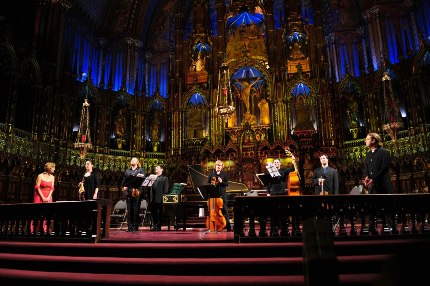
If this is Baroque, please don’t fix it!
Approximately 800 attendees of the 12th International Congress of Human Genetics were treated to a selection from Handel operas
in the magnificent setting of the Notre Dame Basilica. Daniel Taylor, Suzie Leblanc and the Theatre of Early Music delivered a
musical experience that will not soon be forgotten.
Mr. Taylor is touted as Canada’s star countertenor and, while not having had the opportunity to hear from the
rest of the field, it is hard not to believe that this is a case of damning with faint praise. Demonstrating extraordinary control of his instrument
Mr. Taylor conveyed the emotional gamut of the selections, from love and passion to despair and most memorably insane rage (with the requisite flying hair).
It is hard to imagine a more devoted interpreter of this repertoire.
As fine as Mr. Taylor’s performance was, for me the revelation of the evening was the soprano,
Suzie Leblanc. With a rich, pure tone of crystal clarity, Ms. Leblanc evokes the voice and style of her mentor,
the great English Baroque soprano Emma Kirkby. Indeed, in this listener’s opinion Ms. LeBlanc’s vocal quality has
infinitesimally more color while matching the unparalleled musicianship of the former. I am looking forward to
exploring her discography not only to hear her perform the Baroque repertoire, but to enjoy performances of Acadian folk song.
The band, using authentic Baroque performance technique, was sensitive in its support of
the singers and was given the opportunity to shine in two overtures. While all of the musicians were
exemplary and the ensemble impeccable, two were especially noteworthy (pun intended). The 1st violinist Chloe Meyers was
given ample opportunity to interact with the vocalists and was their equal in the antiphonal give and take. The obvious delight in
the interplay of ornamentation between the soloists and violinist consistently put a smile on my face. Contemporary jazz musicians
could take a thing or two from these musicians to employ the next time they are trading fours. Praise is also due the oft neglected
member of most ensembles, bassist Reuven Rothman. With such a small group it is almost impossible for the bass not to dominate when
it is playing, yet the blend with the other instruments was perfect, well done!
Perhaps the finest compliment that can be paid to all the performers was the reaction of the audience. Having attended a number of these events
in the past has conjured nightmares of performing before a ’gabble’ of geneticists who are absorbed in their quatrain of A, C, T and G
to the apparent neglect of the 12 glorious notes between A and G. Indeed, at the outset, applause was polite if a bit perfunctory,
but by the end the assembly erupted in a standing ovation that testified to the connection between the performers and the audience.
Truly one of the finest performances I have attended and the highlight of the meeting. Thanks to the organizers, particularly Judith Allanson, Secretary-General of the ICHG for their work in arranging this wonderful concert.
Marc S. Williams, MD, Director, Clinical Genetics Institute, Intermountain Healthcare, Salt Lake City, Utah
 Sony Classical Masterworks Announces the signing of Daniel Taylor as an Exclusive Recording Artist.
Sony Classical Masterworks, one of the largest major recording companies in the world,
represents the finest musicians in the world including Yo-Yo Ma, Andrea Bocelli and Joshua Bell.
Sony Classical Masterworks Announces the signing of Daniel Taylor as an Exclusive Recording Artist.
Sony Classical Masterworks, one of the largest major recording companies in the world,
represents the finest musicians in the world including Yo-Yo Ma, Andrea Bocelli and Joshua Bell. IMG Artists Europe and Asia:
IMG Artists, the global leader in the artist management business, is pleased to announce the signing of Daniel Taylor
and the Choir and Orchestra of the Theatre of Early Music. With an unparalleled degree of artistic and managerial talent,
IMG is committed to breaking new ground in the ever-evolving world of the performing arts. IMG Artists and Daniel Taylor
look forward to beginning their future touring collaborations. Daniel Taylor comments “I am honoured to have the
opportunity to work with this brilliant management team which will compliment our work with local agents in South America,
Canada and in France.”
IMG Artists Europe and Asia:
IMG Artists, the global leader in the artist management business, is pleased to announce the signing of Daniel Taylor
and the Choir and Orchestra of the Theatre of Early Music. With an unparalleled degree of artistic and managerial talent,
IMG is committed to breaking new ground in the ever-evolving world of the performing arts. IMG Artists and Daniel Taylor
look forward to beginning their future touring collaborations. Daniel Taylor comments “I am honoured to have the
opportunity to work with this brilliant management team which will compliment our work with local agents in South America,
Canada and in France.”